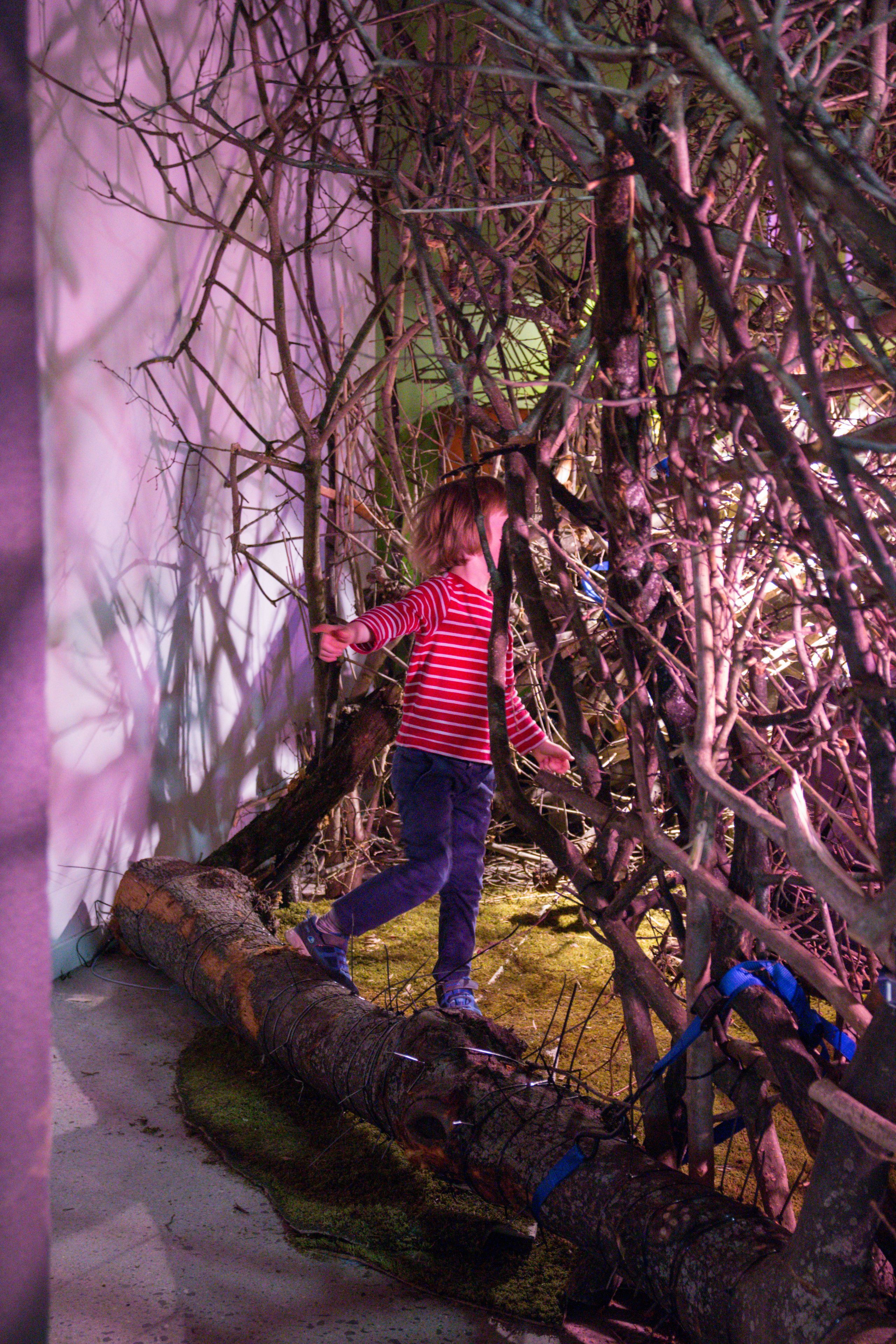The Bird´s Nest
The nest – big enough for people to walk into – constructed in the middle of the exhibition KlimaLab. The walls of the nest are made out of local linden trees from Bislett, Oslo. The floor is moss and the nest include blue ribbons and rope, just like how the male Bowerbird would decorate it.
"Animals who are concerned with aesthetics are fascinating, when we heard a podcast about the Bowerbird and how it decorates its nest to attract mates, we had to use the bird as an inspiration for our installation."
The Bowerbird, or the Gardner as its also called, is a bird that is native to Australia and New-Guinea. The male Bowerbird builds a complex nest – or a bower- in a small forest clearing and he will decorate it with blue details to attract females. The female Bowerbird will pick the nest she likes the most, so it is up to the male to make his nest as beautiful as possible.
When the female bird inspects the nest, the male will perform a carefully choreographed dance. The nest has always two exits, and if the nest is not up to the female´s standard she can easily fly away. It is the male with the most beautiful nest and the best dance that will win the female´s attention.
Trees and forest are an important part of the exhibition KlimaLab, and a third of the exhibition consists of trees, just as a third of the planet is covered in vegetation. The exhibition will be on display from April to November 2019..
The trees in the exhibition has grown in the city center of Oslo, but they were not cut down for this exhibition. If you take a closer look at the tree trunks in the nest, you will notice a black layer of pollution. The city and its pollution are not an ideal place for plants and trees, but the city and its people would not thrive without its green lungs. They play an important role in collecting and capturing CO2 emissions, that would otherwise be released into our atmosphere.
At the same time, the nest with its trees and the story of the Bowerbird, tells us a story that is worth saving and taking care of. Our planet is full of different species, all playing their part in the circle of life. There are still new species that are being discovered, but the number of endangered species are growing at a rapid rate. According to a new UN report, 25 per cent of all species are threatened by extinction.
"I hope people take their time when visiting the nest, It´s the feeling of comfort and safety that is connected to places like this in nature. Everyone remembers how it was to be a young child and discover that there were open spaces inside bushes and trees.”
– Jan Hakon Erichsen.
Share:
